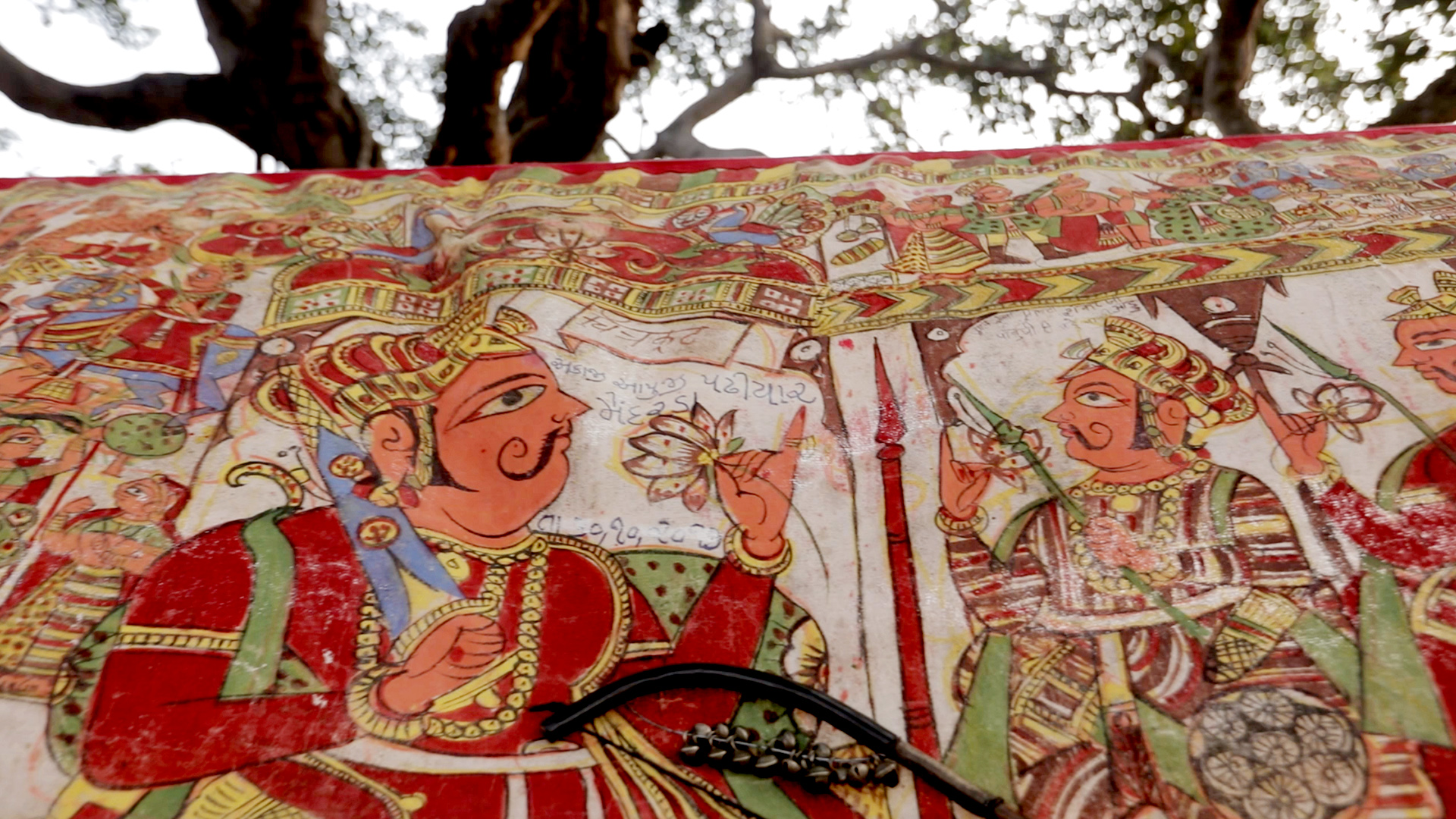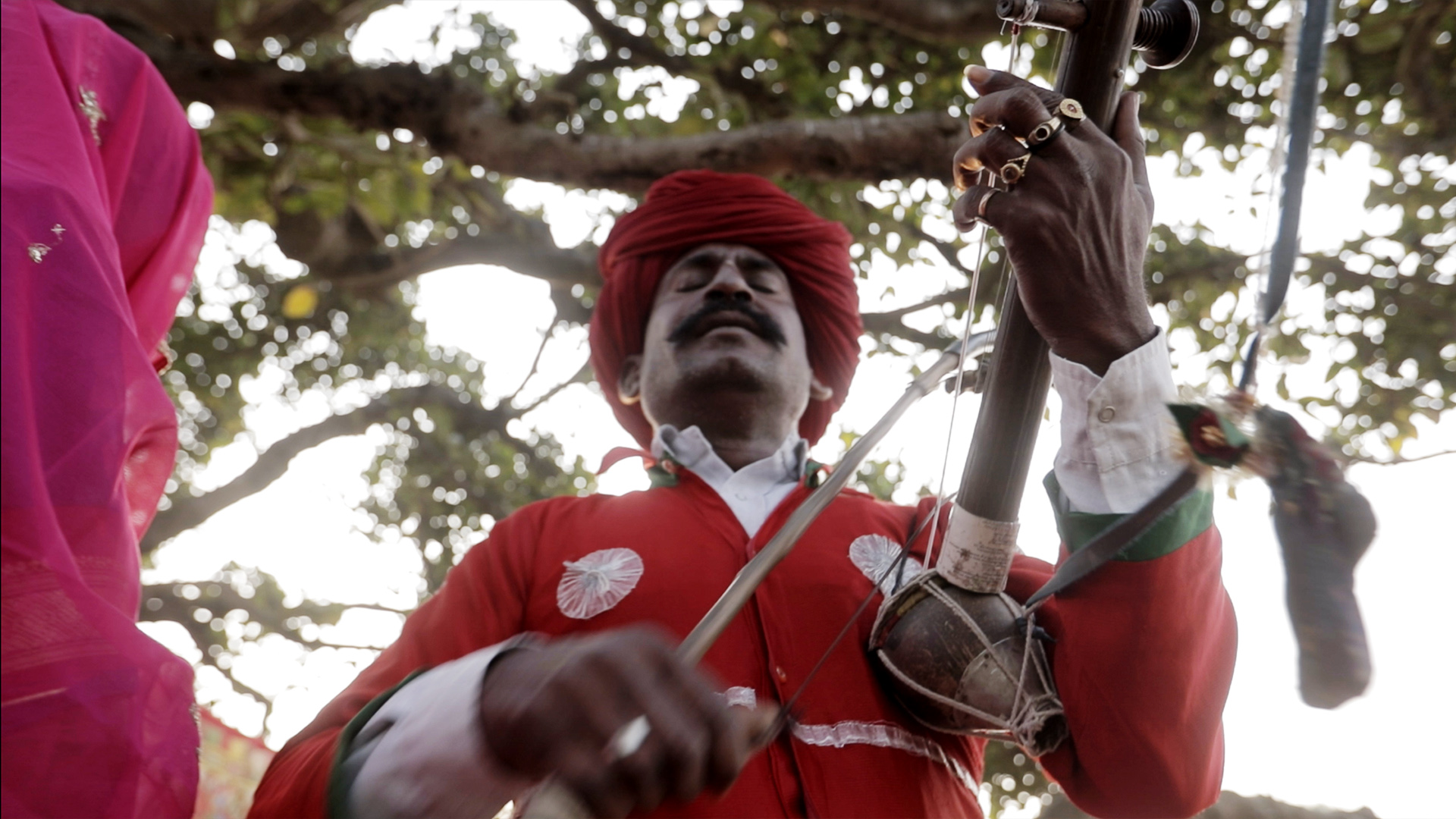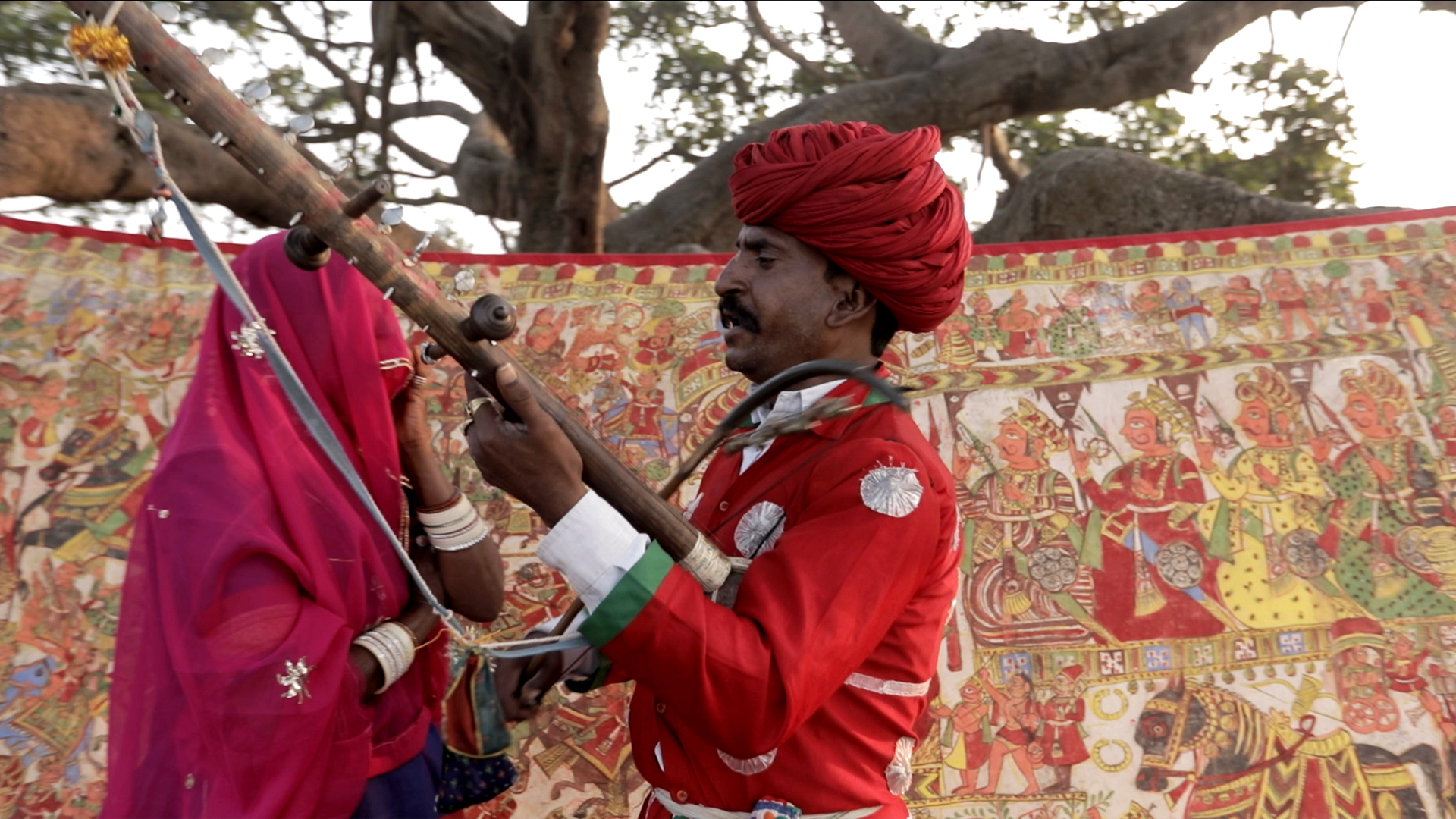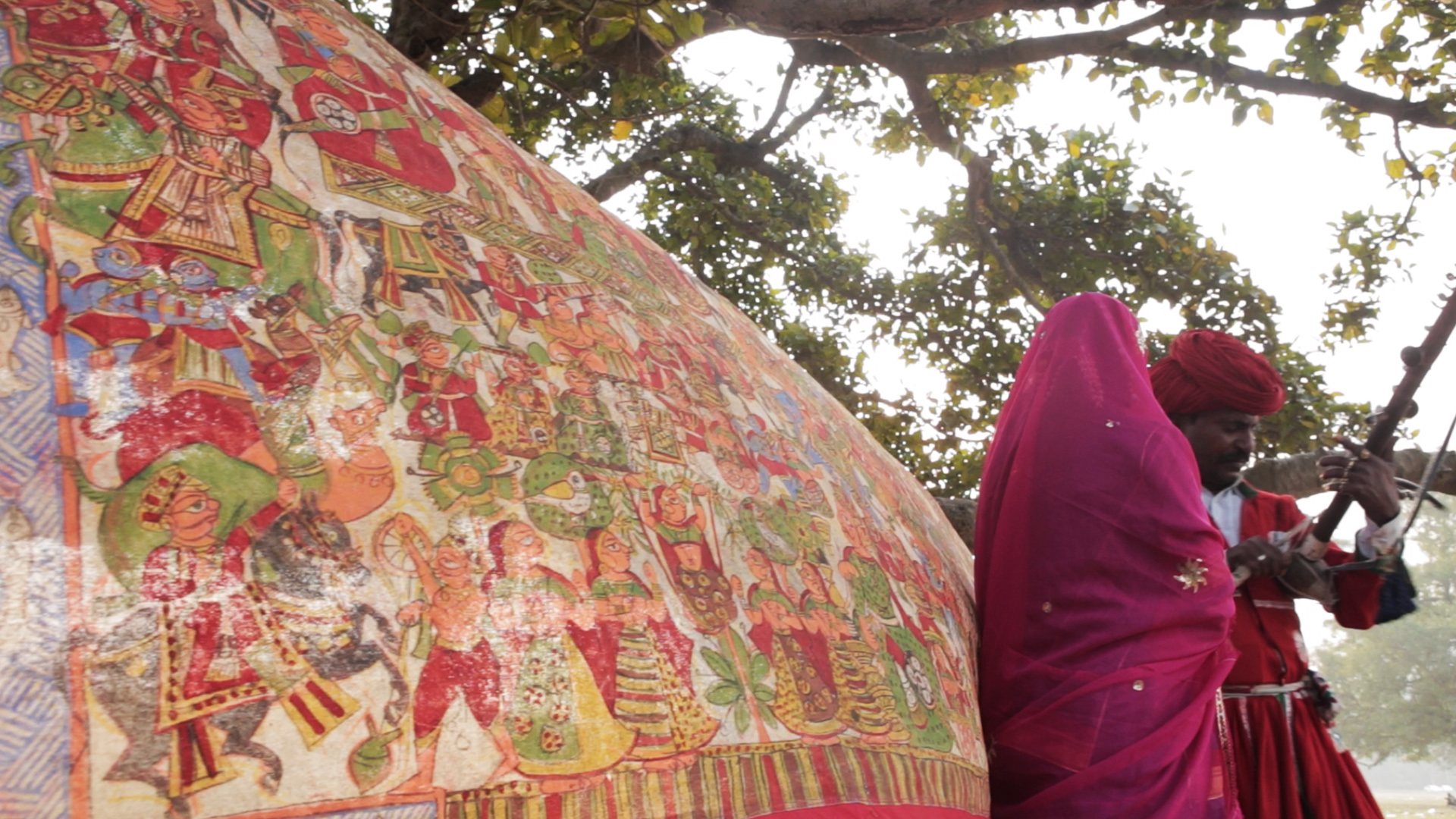Recent Posts
- Chekka Bommalata - the exquisite art form and its dwindling culture
- Phad in the times of Corona - In conversation with a Phad artist
- Folk and Pop Culture
- Bridging Tradition and Modernity | Karmic justice in The Man-Eater of Malgudi: A throwback to the Jataka and Panchatantra tales
- The Exquisite Travelling Temples of Rajasthan - Phad
- Bauls – the bards of Bengal
- Bridging Tradition and Modernity | Mohini-Bhasmasur in Malgudi
- Harikatha: One Tradition, Many Stories
-

The Exquisite Travelling Temples of Rajasthan - Phad
Isha Bhattacharya
Standing five feet across an elaborate Phad painting, in an art gallery, after I had moved away from my hometown, conjured up a strange sense of nostalgia in me. It felt as if I was looking through a portal into the kind of life I had led in my home state of Rajasthan. The juxtaposition of chaos and order, perfectly complementing each other in a frame; the joyous, bright colours welcoming you in an embrace; and an impression that a great epic is continually unfolding around you.
Phad is a type of scroll painting that chronicles elaborate religious stories of local deities and gods, recited by professional narrators, known as Bhopas. The folk art form’s history is as intricate and elaborate as the paintings, themselves. Phad quite literally, means to read and is possibly derived from the Sanskrit word patt. It was earlier pronounced as ‘Padh’ (पढ़) which was later called phad (फड़). Another reason for these paintings to be called Phad, which means folds in Rajasthani dialect, can be that these paintings are customarily opened or unrolled after sundown, in conjunction with the all-night performance.

It is said that Phad scrolls date back roughly 700 years, and are believed to have been first commissioned by Chochu Bhat, a devotee of Lord Devnarayan. Devnarayan was a medieval Gurjar warrior from Rajasthan, worshipped as an incarnation of Vishnu and a folk deity, mostly in Rajasthan and north-western Madhya Pradesh.
The professional Phads painters who are also called Chitera are known by their ancestral name 'Joshi' and reside in Bhilwara, Rajasthan. Joshi is a derivative of "Jyotishi", and earlier Joshi Phad artists were engaged in astrology but later adopted Phad painting as their profession. According to their ancestral history, during the 10th century AD, Chochu Bhat commissioned them to make Phad paintings based on Devnarayan's life. Incredibly impressed by the artwork, Devnarayan, then blessed their entire clan to carry on the legacy of creating Phad paintings.
Hence, the Phad artists are impeccably skilled, as they strictly adhere to techniques taught by their ancestors. Creating a painting can take between a few weeks to a few months, depending on the complexity of the artwork. Designed on a hand-woven coarse cotton cloth, the creation process of the paintings is entirely organic. The artists make use of natural fibres, and natural colours sourced from stones, flowers, plants and herbs. The paint is then handmade by the artists.
The origins of the Phad performances also have an intriguing past. Local history states that when the nomadic Rabari community of cattle herders in Rajasthan was prohibited from visiting temples, they decided to carry the temple with them in the form of the Phad paintings also called, Chalta Firta Devra.


Soon after, their performances were celebrated across villages. The Performances would usually begin in the evening and narration would last anywhere from 9-12 hours.
A Bhopa or priest, who is the primary narrator, wears a red Baga skirt, a red Safa (turban) with a red Bagatari (shirt) accessorized with ghungroos around his ankles and a Jantar on his neck. He begins with singing ballads and dancing to the tune of his instrument. Though the icons created on these phads are arranged in an orderly manner, the task of reading them is rather complex. The Bhopa carefully narrates the story pictured on the Phad, usually reciting it in the Maand style of singing.
The Diyala-Bhopa or Bhopi, the assistant, accompanies through song and dance, while also illuminating the corresponding section in the painting, using a lamp. A two-string traditional instrument called the ‘Ravanhatta’ is played during the performance.

The origin story of the instrument is equally as fascinating. An alteration of the term, ‘Ravan Hasta Veena’, Ravanhatta, also believed to be the predecessor of present day Veena, may be traced back to king Raavana. Myth has it that Ravana was an ardent devotee of Lord Shiva and rendered divine music to please the lord. One version of the story says that, when Ravana’s hand was trapped under mighty Kailasha, Shiva to teach Ravana a lesson had pressed the mountain down trapping the demon king's hand under it. Ravana then created this instrument plucking his own nerves and veins.
Presently, these paintings have inhabited newer themes like Hindu marriage proceedings etc. And, the makers are not commissioned by the Bhopas and Bhopis to make the Phads, anymore. The Phad that used to be approximately 30 feet long has also trimmed down to 2-3 feet in length.
Early this year, Folk Log hosted a Phad storytelling session at the Kolkata Book Fair. We travelled along with traditional Phad artists, Sohanlal Bhopa and Kamala Devi Bhopee who performed episodes from the life of Bapuji Rathor, an avatar of Lakshman for the audiences
